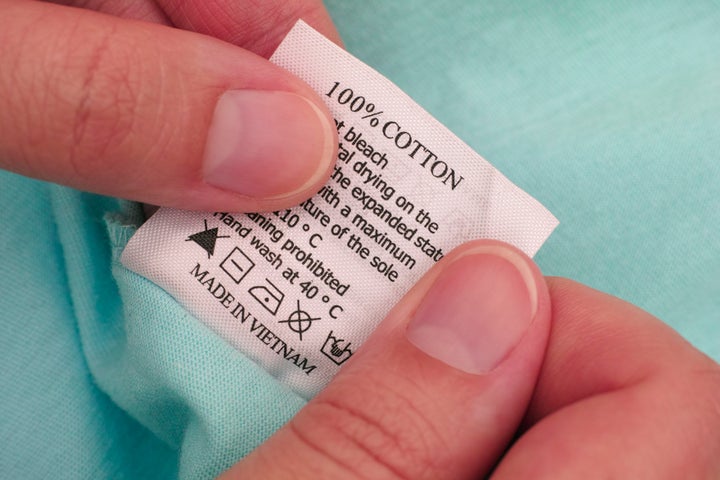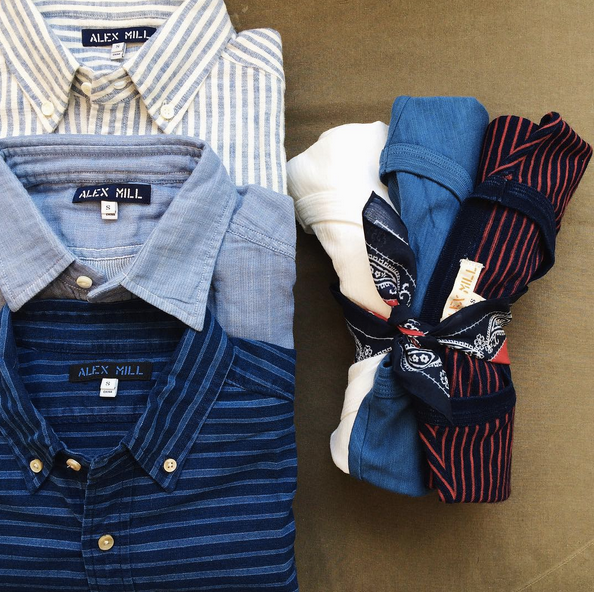As part of HuffPost’s “Reclaim” project, HuffPost Style will focus the month of September on simple ways to educate yourself on becoming a better consumer.
Fast fashion is wildly enticing.
A super-cute skirt for $20? A graphic tee for $10? Yes, yes, we will crack into our paychecks for these. But, as with anything, what’s the true cost? And what is this stuff we love actually made of?

Turns out, some really gross stuff. Now, you may be thinking: “So what? My clothes are made of weird chemicals. What does that matter to me?”
Chemicals can permeate your skin, which is constantly eliminating and absorbing ― all day, every day. So, things that go on your skin can also go in your body. If you are wearing clothing coated in toxic chemicals, it’s possible that you’re absorbing a small amount of these chemicals through your skin and your body must process and eliminate them.
While it’s hard to find conclusive evidence that links toxins in clothing directly to health problems, the studies that do exist are disquieting: some of the chemicals in garments we wear daily have been found to cause cancer in rats, they can cause cancer for the workers who work with them all day and can be damaging in higher concentrations. In the short term, these chemicals can cause allergic reactions and irritation.
While that doesn’t mean your favorite shirt is giving you cancer, it’s enough to make us wonder why all of our clothing is full of these substances to begin with. Take formaldehyde for example, which is often found on items that claim to be crease resistant. According to a report from the National Industrial Chemicals Notification and Assessment Scheme, formaldehyde in clothing leads to eye and nose irritation and allergic reactions on skin.
And the thousands of chemicals that are present in our clothes didn’t just end up there now. They’ve been there for years.
In a 2012 report by Greenpeace entitled “Toxic Threads: The Big Fashion Stitch-Up,” it was confirmed that major brands ― like Zara, Levi’s, Mango, Calvin Klein and H&M ― were making and selling clothes containing hazardous chemicals.
So, what are these toxins exactly and what fabrics are they in? Let’s break down what they are and how they could affect you:
1. Acrylic fabrics have dimethylformamide in them, which the CDC says, after interacting directly with skin “can cause liver damage and other adverse health effects.” These effects have caused the people who manufacture acrylic fabrics to have to wear protective clothing just to touch the clothing they’re making.
2. Azo dyes are very common synthetic dyes used for coloring clothes, leather and textiles. They also release amines ― a compound derived from ammonia ― that increased the risk of bladder cancer among German dye factory workers who had regular exposure to it. Instead look for products made with natural dyes.
3. Phthalates are found in a lot of fast fashion, specifically DEHP and DINP, and sometimes BBP (you aren’t likely to see any of them listed on a label, so you don’t even need to remember these acronyms). They’re found in things like plastic raincoats, artificial leather and waterproof clothing. Phthalates are endocrine disrupters and have been linked to adverse reproductive effects in male rodents. The International Agency for Research on Cancer (IARC) has not determined whether phthalates are carcinogenic to humans.
4. Nanosilver is used as an antimicrobial agent to inhibit odor-causing bacteria in clothing. Early research with lab rats has found that silver nanoparticles can get into the brain and kill brain cells over time. The risk assessment for babies chewing on fabrics with nanosilver could possibly result in harmful exposures, but it hasn’t been thoroughly tested to glean whether that’s true of all cases or what those harmful exposures would be.
5. Anything that touts itself as static resistant, stain resistant, flame retardant, or wrinkle-free is often treated with formaldehyde, perfluorinated chemicals (PFCs) like Teflon, nonylphenol ethoxylates (NPEs) and nonylphenols (NPs), or triclosan, according to The IFD Council, the world’s leading modest fashion and design council representing the Islamic economy. NPEs and NPs are absorbable through the skin and have been shown to be associated with reproductive and developmental effects in rodents, though studies in humans are inconclusive. Studies on factory workers who are exposed to triclosan suggest that regular exposure may contribute to increased cancer risk. Though, the Mayo Clinic says evidence is not strong enough to recommend avoiding this product.
Okay, by now you may find yourself suddenly getting itchy and wanting to purge your closet. Before you do that, we have some good news: There a lot of other fabrics that don’t have any icky things in them that you can wear in good faith.
Those include: cotton, silk, organic wool, hemp, alpaca, angora, camel, cashmere, mohair, flax, ramie, and aluyot. While chemicals can certainly also be found on so-called natural fabrics, they are less prevalent. Also, just because you’re wearing less harmful fabrics doesn’t mean you need to compromise price. There are plenty of brands doing great things in the way of cutting cost, not quality.

Our best advice is to start checking your clothing tags a bit more carefully. Your health could depend on it.
